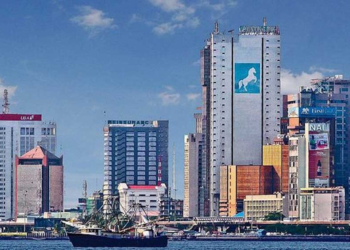The recent unification of the exchange rate in Nigeria aimed to close the gap between the Investors and Exporters (I&E) windows and the parallel market rate. However, an emerging gap between these rates has been observed, raising concerns about the effectiveness of the unification policy. On July 19, 2023, the naira was trading at N742 per dollar in the I&E window, while the parallel market rate reached N860 per dollar, indicating a significant depreciating gap of N118 per dollar.
To address the issue of exploitation of the I&E window’s official rate by bank managers, the Central Bank of Nigeria (CBN) collapsed the Investors and Exporters windows. The intention was to allow the exchange rate to fluctuate based on supply and demand in the market, fostering currency stability, lowering inflation, and reducing corruption in the country.
However, the recent widening gap between the I&E windows and the parallel market rate suggests that the market is reverting to its previous state, and exploitation is becoming more prevalent. This situation has further depreciated the value of the naira as the demand for dollars surpasses its supply. The implications of this depreciation are far-reaching, leading to an increase in the prices of goods and services and exacerbating the level of poverty in Africa’s most populous country.
Economists and experts have expressed concerns over the potential negative impact of the widening exchange rate gap. Currency instability can lead to uncertainties in the market, hindering foreign investment and affecting overall economic growth. The rising prices of goods and services will likely place a burden on consumers, particularly those with lower income levels, and could exacerbate the ongoing poverty crisis in the country.
The unification of the exchange rate was seen as a step towards a more transparent and market-driven foreign exchange system. However, the recent developments highlight the challenges in achieving currency stability and addressing underlying issues in Nigeria’s economy.
According to Stephen, a ratecaptain research analyst, he offers his insight on the situation “There are several factors contributing to the widening gap between the I&E windows and the parallel market rate.” “One possible reason is the limited supply of foreign exchange due to fluctuations in oil prices, which significantly affect Nigeria’s export revenue. Additionally, the unavailability of foreign exchange in the official market may be driving individuals and businesses to seek foreign currency through the parallel market, leading to increased demand and higher exchange rates”. he said.
Furthermore, the unification policy has had unintended consequences for Nigeria’s economy, as some businesses and individuals are engaging in speculative activities in response to the fluctuating exchange rate, further distorting the market. This highlights the importance of a comprehensive approach to addressing the issue, taking into account not only the exchange rate dynamics but also broader economic factors that contribute to currency instability and inflation.
Bottom Line
The widening gap between the I&E window rate and the parallel market rate after the exchange rate unification calls for a critical review of the policy’s implementation and its impact on Nigeria’s economy. The CBN and relevant stakeholders should consider additional measures to achieve a more stable exchange rate and address the root causes of currency depreciation and inflation. Only through comprehensive and well-calibrated policies can Nigeria move towards sustainable economic growth and reduced poverty levels.











